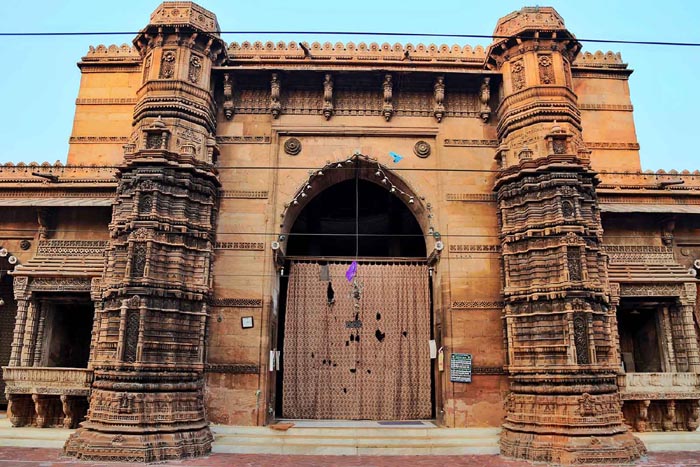Rani Rupmati's Mosque

Information on Rani Rupmati's Mosque (Ahmedabad, Gujarat) - History & Architecture
Rani Rupmati's Mosque is one of the popular masjids in Ahmedabad city of Gujarat. It marks a vital characteristicswhich are common in Indian history of sovereigns, mainly in Northern and Western states of the nation. Similar to various other ancient masjids in Gujarat, Rani Rupmati's Mosque also demonstrates its religious significance and architectural beauty by combining both Hindu and Muslim styles. It is one of the most important holy places in Ahmedabad city.
Rani Rupmati's Mosque Religious Significance
The religious significance of Rani Rupmati's Mosque lies in the love between two opposing religions, i.e. Hindu and Muslim. Queen Rupmati was a Hindu singer from Malwa region. She fell in love with a Sultan named BazBahadur and married in accordance with Hindu and Muslim traditions.
According to historical records, BazBahadur was the prince of Mandu. He was quite affectionate about music. Once he went on hunting and heard playing and signing of Rupmati with her friends. BazBahadur was besotted by her charming beauty as well as her harmonious voice. He then requestedRupmati to go together with him to his capital. Rupmati agreed and went to his capital, i.e. Mandu, but put a condition that she would reside in a palace within vision of her favourite and acclaimed river named Narmada. Thus, a palace named RewaKund was created at Mandu near the river site.
Regrettably, the love between the Hindu shepherdess and the Muslim prince failed as Mughal king Akbar was incited by the beauty of Rupmati and encouraged to triumph over Mandu. He decided to attack Mandu and capture both Rupmati and BazBahadur. Therefore, King Akbar sent Adham Khan, the army general to Manduand BazBahadur went to confront him with his small force. Since, BazBahadur's force was no match against the great army of Adham Khan, Mandu was conquered easily. Then, BazBahadur escaped to Chittogarh in order to obtain assistance. On other side, Adham Khan arrived at Mandu and was astounded by the beauty of Rupmati. However, in order to avoid her capture, Rupmati stoically ate poison. In this way, the mystic love story ended. Rani Rupmati's Mosque was created in order to give honour to queen Rupmati for her sacrifice. Her tomb is situated near the mosque.
Rani Rupmati's Mosque Mythology
Rani Rupmati's Mosque was created between 1430 and 1440. On that time, wedding between two different religions was a common practice for accomplishing political coalition. Even after marriage in different religion, queen Rupmati retained her inherited customs and rites. She was also quite fortunate as she was allowed to practice her own religious activities in Mandu without having go through any discussion. Rani Rupmati's Mosque is custom-made and is an example of cultural tradition.
Rani Rupmati's Mosque Architectural Significance
Rani Rupmati's Mosque is quite small and the vault of queen Rupmati is raised to permit illumination in everywhere in the base. In the masjid, there is one central arch, three impressivevaults, multiple thinturrets and many carved arcades. The vaults are attached by a flat rooftop. The side gateways of Rani Rupmati's Mosqueis open out in a gallery on every side. They are supported with rows of 12 columns. The smaller vaults of the masjid rise around four corners and highpoint the extents.Rani Rupmati's Mosque has lost one of its turrets in an earthquake which occurred in 1818 AD. Still, there are several structures in that area which belong to 15th and 16th century. Owing to its delicate design, Rani Rupmati's Mosque appears like an architectural jewel among other masjids in Gujarat.